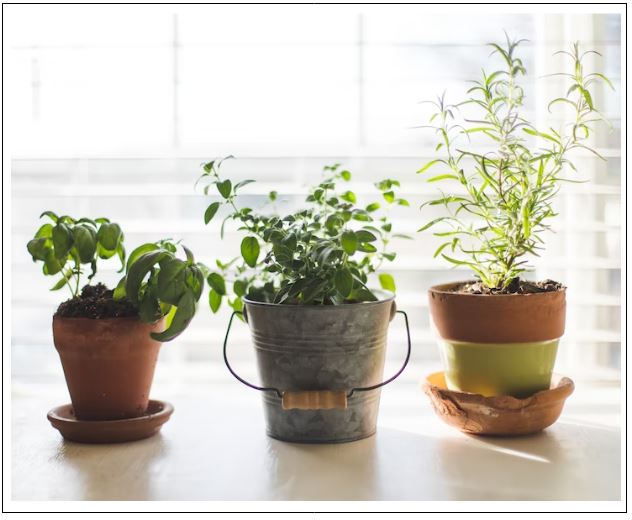
Small homes and apartments often don’t have space for a garden. In regions with cold weather, composting is more difficult, the types of plants you can grow is limited, and it’s generally just too unpleasant to garden.
The good news is that you can still have a green thumb in a small space or during the fall and winter seasons by creating a sustainable indoor garden. Though not exactly like the real deal, indoor gardening gives you many different options as far as what you can grow and how you can help your plants thrive. Best of all, you can keep your indoor plants going strong with the right preparation and plan of action. Let’s talk about the steps you should take to make this garden a reality.
Choose Your Plants
The first step that you will want to take is to think about the types of plants that you hope to grow in your indoor garden. This decision is important because not only will doing so prepare you for what lies ahead, but you can also make the proper preparations to ensure that your plants will thrive.
If you are extremely limited on time and resources, then you may want to find a plant that can thrive with very little involvement. For example, bamboo can grow big and strong in almost any type of environment. Even if you don’t have a lot of windows or natural light and you forget to water them, bamboo plants can still thrive. Other indoor plants that do well on their own include spider plants, aloe, philodendron, and English Ivy.
You may decide that you may not want to grow a standard plant and that you prefer to grow herbs. Many herbs do well in an indoor environment, and they are great for cooking as well. Some of the common herbs that people grow include basil, mint, and rosemary, so if that interests you, then give it a try. You can also grow vegetables indoors, including spinach, cabbage, lettuce, and watercress, so consider those as well.
Keep in mind that if you plan to grow additional plants in the future, then you can do so by propagating what you are currently growing. There are several ways to do so, including carefully dividing them into equal sections or by rooting from a leaf, so you keep most of the original plant intact.
Choose How And Where To Grow Your Plants
Next, you need to think about the environment where you will keep your plants and how you plan to keep your garden alive. Many people choose to build a terrarium due to its sturdiness and the protection that it provides for your plants. Terrariums are typically glass enclosures that only allow you access from the top. You can make your own terrarium at home and fill it with about one inch of sand, stones, and soil so there is room for the plants to grow. You can add many of the plants discussed previously into your terrarium, but make sure that they are not overcrowded.
Whether you are providing a home to your plants in a terrarium or a pot, you will want to follow the proper steps to give them the best chance to thrive. After you add one inch of soil, scatter a layer of seeds in the space and then cover them with another thin layer of soil. If your plant is not one that can grow on its own, then you will want to ensure that you are giving it proper care. Put the plant in a sunny spot and water it every few days to give the seeds the best chance to sprout.
You may also want to consider starting a hydroponic garden, which is essentially a garden without soil. Instead, you use a combination of water and nutrients to help your plants thrive. This option is great because this type of garden takes up less space, it can be grown anywhere, and there is typically a higher yield. Essentially, this works by using a wick system where you will have a reservoir beneath the tray holding the plant. You will then poke the wicks up through holes so they soak up water through the reservoir and into the plant. Then, instead of soil, you can add other alternative hydroponic substrates, such as rockwool, perlite, and vermiculite, that can help your plant thrive even with minimal supervision.
Light, Water, And Insects
In order to make your indoor garden sustainable, you will need to ensure that your plants have the resources that they need to grow big and strong. Since many plants and vegetables require ample sunlight, consider placing your garden near or on the windowsill or out on the balcony, where it will get uninterrupted sunlight. Just make sure that the garden is not in a position that makes it easy to fall onto the floor.
Since you likely have limited resources, you will want to consider reusing water to keep your garden hydrated. There are several options you can try, including collecting water that runs off of a roof during a storm or collecting the cold water from your shower as you wait for it to heat up. If you ever make too much ice, then you can also give the cubes to your plants instead of throwing them down the sink.
It is also important to keep in mind that while plants can be wonderful, they can also attract insects, like spiders and flies, that can be harmful to the plants and your health. For instance, ants can chew through wires and cause structural damage, and if the saliva or droppings of a rat or mouse get into your food, it could cause disease. You can eliminate this problem by having a pest control specialist visit your home to find problem areas and remove the threat.
Don’t Forget The Fertilizer
You’ll also want to look into a good fertilizer to help your plants thrive. While you can buy fertilizer products at the store, many people choose to use natural fertilizers because they provide essential nutrients, including potassium, calcium, and magnesium. You don’t have to go far to find natural fertilizers. Instead, look to your pantry. Once you finish your banana, give the peel to your plant for a strong dose of potassium. Have leftover eggshells? Use them as fertilizer, so your plants get their essential helping of calcium. Other great natural fertilizers include coffee grounds, green tea, and molasses.
As you can see, with a bit of planning and some imagination, you can grow plants indoors and watch them thrive throughout the seasons. Consider the tips discussed here, and you can create a healthy garden without wasting valuable resources.

About the Author
Jen is your go-to guru for crafting a cozy, green cocoon. 🪴 Her dive into sustainable building wasn’t just about saving the planet—it started as a mission to make family movie nights eco-friendly (and to ensure the popcorn was the only thing getting heated!). With a knack for breaking down the jargon, Jen turns eco-lingo into everyday language. Swing by the Green Living blog for a mix of earth-loving advice and home improvement hacks. Whether you’re just dipping your toes into green waters or you’ve been swimming in the deep end of DIY projects, Jen’s here to guide, giggle, and remind you that every eco-choice is a step towards a planet that thanks you… and maybe even sends a rainbow your way! 🌈
